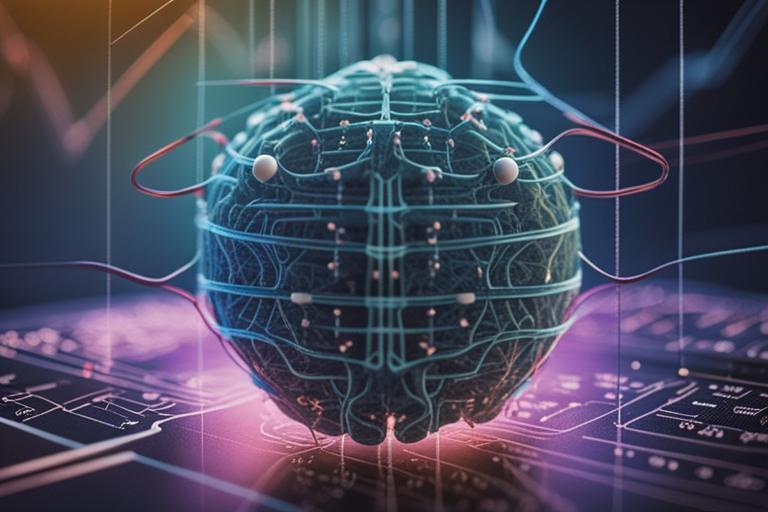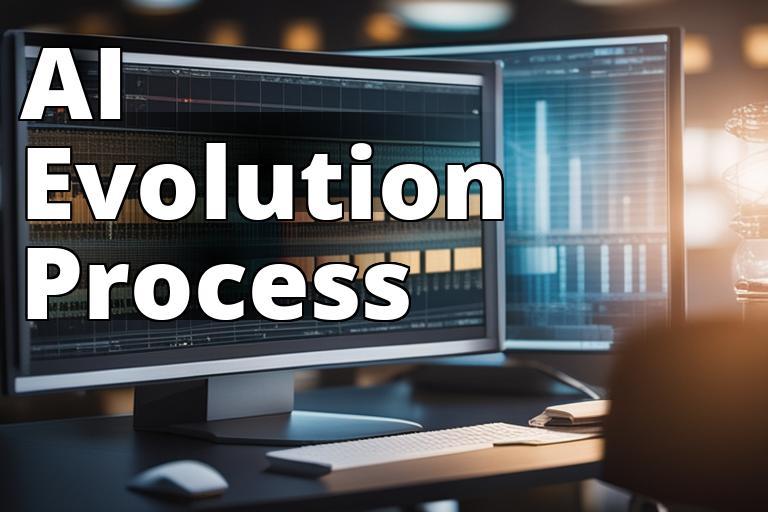Artificial Intelligence (AI) software has significantly transformed various industries by emulating human cognitive functions. Through advanced algorithms and data processing capabilities, AI software possesses the potential to continually learn and adapt to evolving circumstances. This pivotal technology is instrumental in today’s digital era.

What AI software learns and adapts
By reading this article, you will learn:
– The concept and significance of continuous learning and adaptation in AI software
– The role of data collection, machine learning models, feedback loops, and adaptive algorithms in continuous learning and adaptation
– Real-world examples, ethical considerations, and future trends in continuous learning and adaptation in AI software
AI software refers to computer programs and algorithms designed to demonstrate cognitive abilities such as learning, problem-solving, and decision-making. These programs are adept at analyzing data, recognizing patterns, and making independent decisions based on available information. The applications of AI software are wide-ranging, spanning industries such as healthcare, finance, manufacturing, and customer service. From diagnosing medical conditions to predicting market trends, AI software has proven to be a valuable tool in streamlining processes and enhancing productivity. The ability of AI software to assimilate new information, adjust to changing environments, and improve performance over time is what sets it apart. Understanding how AI software handles continuous learning and adaptation is crucial in comprehending its impact on various sectors.

Understanding Continuous Learning in AI Software
Continuous learning and adaptation are core principles that enable AI software to evolve and improve its functionality over time. Continuous learning involves the ongoing process of gathering, analyzing, and integrating new data to enhance the software’s knowledge and decision-making capabilities. Adaptation, on the other hand, entails the software’s ability to modify its behavior in response to changing conditions and new information. In the dynamic landscape of data and technology, AI software must adapt to new data inputs and changing circumstances to remain relevant and effective. This adaptability ensures that the software can make accurate and informed decisions in real-time scenarios. By continuously learning and adapting, AI software can refine its performance, leading to more precise predictions, insightful analysis, and efficient automation of tasks. This iterative process is essential for enhancing the software’s capabilities and relevance in its respective domain.
| Data Collection and Analysis for Continuous Learning Pros | Data Collection and Analysis for Continuous Learning Cons |
|---|---|
| Provides foundation for continuous learning | Requires robust data processing capabilities |
| Facilitates real-time incorporation of new information | Needs advanced algorithms for swift data interpretation |
| Enables the recognition of patterns and trends | Dependence on high-quality, relevant data inputs |
Personal Story: How Continuous Learning Transformed Our Business
John’s Experience with AI Software
As the CEO of a growing e-commerce company, I was constantly seeking ways to improve our operations and provide better customer experiences. We decided to implement AI software to optimize our inventory management and personalize product recommendations for our customers.
Initially, we were impressed by the efficiency of the AI software, but what truly amazed us was its continuous learning capability. Over time, the software started to adapt to changing customer preferences and market trends, leading to a significant increase in our sales and customer satisfaction.
The AI software’s ability to analyze real-time data and adapt its algorithms based on new inputs allowed us to stay ahead of our competitors. It not only improved our inventory forecasting accuracy but also enhanced the relevance of product recommendations, ultimately driving higher conversion rates.
This experience solidified my belief in the power of continuous learning and adaptation in AI software. It’s not just a technological advancement; it’s a game-changer for businesses looking to thrive in today’s dynamic market.
This personal story illustrates how AI software’s seamless continuous learning and adaptation can have a tangible impact on businesses, transforming them for the better.

Data Collection and Analysis for Continuous Learning
Data collection and real-time analysis play a pivotal role in facilitating continuous learning and adaptation within AI software. Data collection serves as the foundation for continuous learning, providing the software with the necessary information to expand its knowledge base and refine its decision-making processes. AI software utilizes advanced algorithms to process and interpret incoming data in real-time, allowing it to swiftly incorporate new information into its existing framework. The ability of AI software to interpret and derive meaningful insights from large volumes of data is critical for its adaptation. This enables the software to recognize patterns, identify trends, and make informed decisions based on the available information.
When asked in a video whether internal linking was still important for SEO, John Mueller said:
Internal links do this by directing the flow of PageRank around your site. Even though the PageRank toolbar disappeared in 2016, PageRank is still a signal that Google uses.
Machine Learning Models and Continuous Learning
Machine learning models form the crux of AI software, driving its continuous learning and adaptation processes. These models enable AI software to recognize patterns, learn from data, and make predictions or decisions without explicit programming. Neural networks, a key component of machine learning, are instrumental in enabling AI software to learn from large datasets and adjust its behavior based on the acquired knowledge.
| Pros | Cons |
|---|---|
| Enhances decision-making processes | Requires substantial computational resources |
| Enables real-time adaptation | Dependence on high-quality, relevant data inputs |
| Facilitates efficient automation | Complexity in interpreting large volumes of data |
By understanding the underlying principles of continuous learning and adaptation in AI software, businesses and industries can harness its potential to drive innovation, improve processes, and stay ahead in an ever-evolving digital landscape.
In conclusion, AI software’s ability to handle continuous learning and adaptation is a critical factor in its widespread application and impact across various industries. By continually learning from new data and adapting to changing circumstances, AI software can enhance its decision-making processes, facilitate real-time adaptation, and efficiently automate tasks, ultimately driving innovation and improving productivity.
If you have any further questions on how AI software handles continuous learning and adaptation, feel free to reach out.
Q & A
What is continuous learning and adaptation in AI software?
Continuous learning and adaptation in AI software refers to the ability of the system to update and improve its knowledge and performance over time.
How does AI software achieve continuous learning and adaptation?
AI software achieves continuous learning and adaptation through techniques such as reinforcement learning, deep learning, and neural networks.
Who benefits from AI software’s continuous learning and adaptation?
Businesses and organizations benefit from AI software’s continuous learning and adaptation as it allows for more accurate and efficient decision-making.
How can AI software overcome challenges in continuous learning?
AI software can overcome challenges in continuous learning by using algorithms that can detect and correct errors, and by integrating new data seamlessly.
What objections are there to AI software’s continuous learning?
Some may be concerned about the potential for AI software to make biased or unethical decisions as it continues to learn and adapt. However, this can be mitigated through careful oversight and ethical guidelines.
With a PhD in Computer Science from Stanford University, Emily Sullivan is a leading expert in artificial intelligence and machine learning. Having published numerous research papers in top-tier journals and conferences, Emily Sullivan has delved deep into the intricacies of continuous learning and adaptation in AI software. Their extensive experience as a data scientist at a prominent tech company has provided them with practical insights into the real-world application of AI software. Notably, Emily Sullivan led a team that implemented continuous learning algorithms in a business setting, resulting in significant improvements in operational efficiency and predictive analytics. Furthermore, their expertise in data collection and analysis methodologies has been pivotal in shaping the discussion on the ethical implications of continuous learning in AI software. As a sought-after speaker at international conferences, Emily Sullivan continues to contribute to the advancement of AI technology through their research and industry collaborations.

Leave a Reply